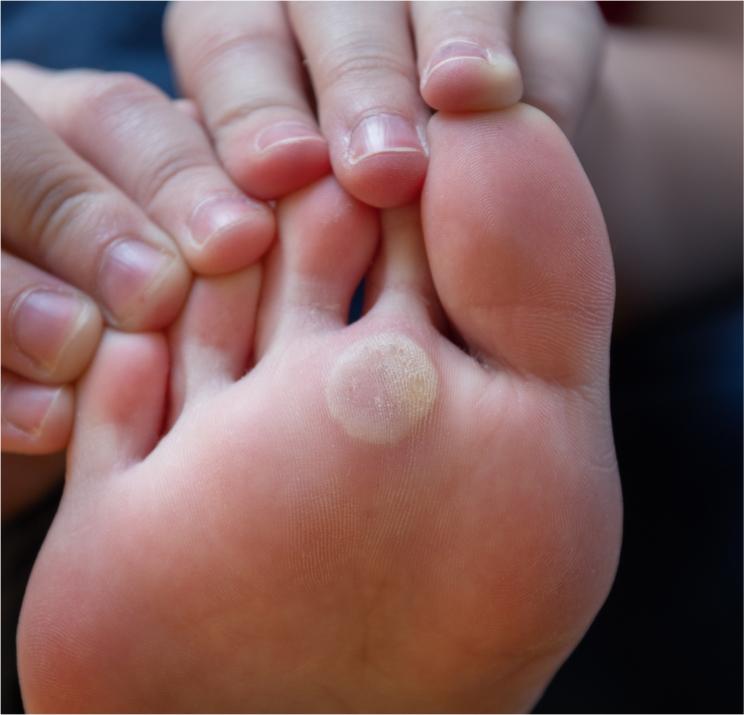The Difference Between Corn and Verruca
 Foot ailments can be quite uncomfortable and, in some cases, very painful. Two common conditions that afflict the feet are corns and verrucae. While these conditions share some similarities, it is important to understand the differences between them to ensure appropriate treatment and care. In this article brought to you by Mountain Spring Podiatry, we explore the fundamental differences between corns and verrucae and shed light on their distinct characteristics, causes, and treatment options.
Foot ailments can be quite uncomfortable and, in some cases, very painful. Two common conditions that afflict the feet are corns and verrucae. While these conditions share some similarities, it is important to understand the differences between them to ensure appropriate treatment and care. In this article brought to you by Mountain Spring Podiatry, we explore the fundamental differences between corns and verrucae and shed light on their distinct characteristics, causes, and treatment options.
If you are looking for a licensed podiatrist, or foot doctor, then call Mountain Spring Podiatry to schedule an appointment or arrange a walk-in appointment. We look forward to getting you back on your feet, comfortably.
On Corns…
Corns are small, thickened areas of skin that typically develop on the feet, particularly over bony prominences and pressure points. They are caused by friction and pressure, often resulting from ill-fitting shoes, repetitive rubbing, or excessive walking. There are two primary types of corns: hard corns and soft corns.
- Hard Corns: Hard corns are the more common of the two and appear as small, round, raised areas of thickened skin, which can be yellow or gray in color. They usually develop on the tops and sides of the toes or on the sole of the foot.
- Soft Corns: Soft corns are white, rubbery lesions that develop between the toes, usually due to moisture and friction. They are softer and more pliable than hard corns, often causing discomfort and pain.
On Verrucae…
Verrucae, commonly known as warts, are viral infections caused by the human papillomavirus (HPV). These warts often appear on the soles of the feet, but they can also manifest on the hands and other parts of the body. Unlike corns, verrucae are contagious and can be spread through direct contact!
The Differences Summed Up
The most significant difference between corns and verrucae are the causes. Corns are primarily caused by friction and pressure on the skin. Ill-fitting footwear is a common contributing factor. Verrucae, on the other hand, are viral infections caused by the HPV. They are contagious and can spread through direct contact with the virus.
The two also differ in how they look. Corns are thickened, raised areas of skin that can be yellow or gray. They are often well-defined and have a hard texture. Verrucae are typically small, fleshy growths with tiny black dots. They may have a rough texture and can be mistaken for calluses.
You may be able to differentiate corns and verrucae based on the location too. Corns tend to develop on areas of the feet subjected to repetitive pressure, such as the tops and sides of the toes or the soles of the feet. Verrucae usually appear on the soles of the feet but can also occur on other body parts, like the hands.
The final difference to know is that corns are not contagious and do not spread from person to person. Verrucae, however, ARE contagious and can be transmitted to others through contact with the virus.
Visit a Podiatrist, or Foot Doctor
If you experience chronic or severe foot pain, or if you have a concerning foot condition, then consider visiting a reliable podiatrist, or foot doctor in Bristow, VA. Residents in the area are welcomed to call Mountain Spring Podiatry to schedule an appointment or arrange a walk-in appointment.
